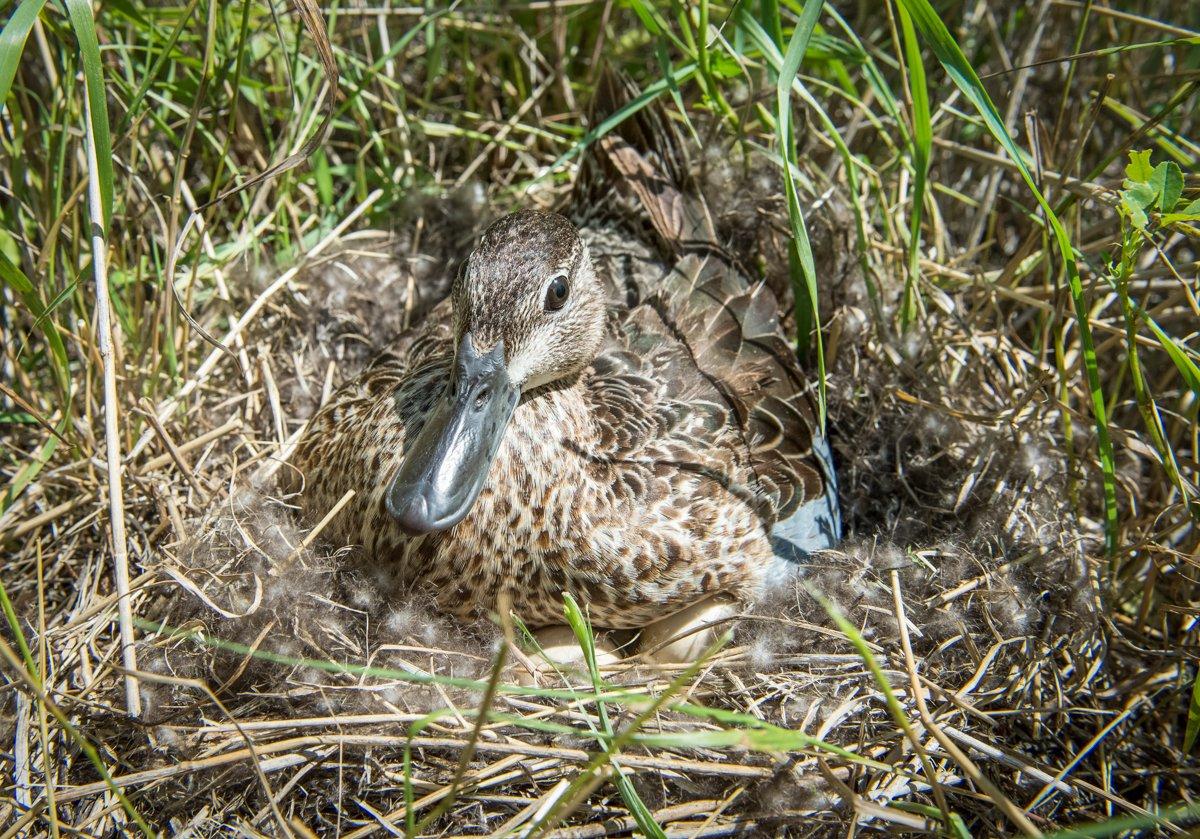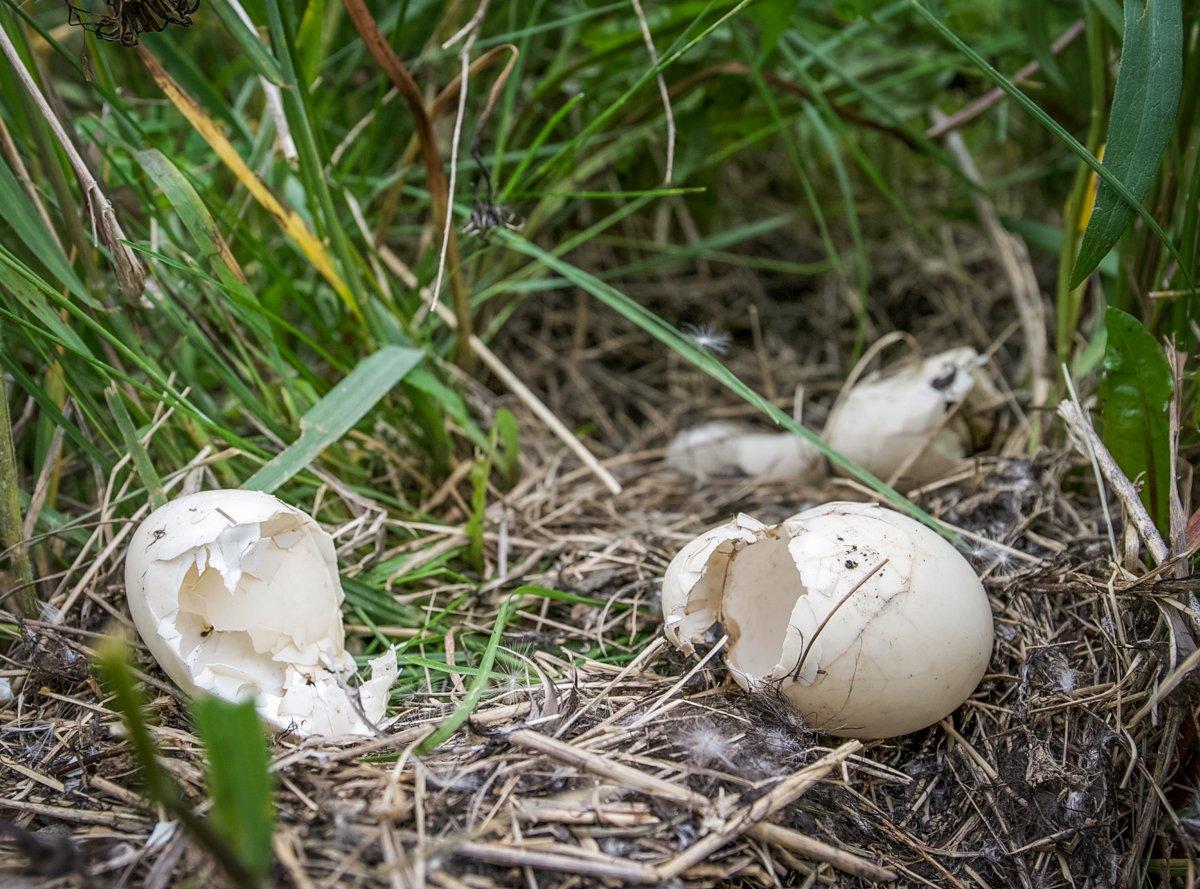Could targeted trapping increase nesting success from 7 % to 30 %? Some think it could
Hunters would see more ducks funneling down the flyways if we had fewer predators in nesting areas. Or at least that's what Frank Rohwer thinks.
Out of every 100 duck eggs laid in prime nesting areas, 75 to 90 of them never hatch. Most are eaten by predators, said Rohwer, the president and chief scientist of Delta Waterfowl.
We could have a lot bigger fall flights if we knew how to solve the predation problem, he said.
A small percentage of nests are lost to flooding and farming operations (the latter especially affects pintails, which will nest in stubble fields).
But the overwhelming cause of nest failure and egg destruction is predation, he said.
Main Offenders
Red foxes are the most destructive culprits, scouring grassy nesting areas in the prairie pothole regions of South Dakota and North Dakota, and parts of Minnesota, Manitoba, Saskatchewan and Alberta.

It's winter food for foxes, he said. But they cache the egg, and in the process of doing that, they'll find another nest, and they'll cache all those eggs, too.
Fortunately, ducks are geared toward high predation, Rohwer said. If a hen mallard loses a clutch of eggs it will renest and produce another clutch. In fact, mallards will renest up to five or six times a season if necessary. However, if the fox kills the hen, obviously, there's no chance of renesting. Foxes are efficient predators, so when they hit a productive nesting area, they can do a lot of damage.
You can have a field that has a whole lot of nests in it, and then you come back and do a nest check, and all the nests are empty, so you know you have a fox out there, Rohwer said.
He's seen it time and again. Ducks are attracted to and use an area with great nesting success, but then all the nests fail.
That's classic fox, Rohwer said.
After foxes, raccoons and skunks are the worst nest predators; raccoons with diving ducks, because of their proclivity for water, and skunks on dabblers.
Those are the top three for sure, he said. We call them the trifecta. But don't be fooled. Badgers are bad-ass predators on ducks, too, but they tend to specialize on ground squirrels.
Conversely, hunters will likely say they've seen lots of ducks the past few years, which is true and is the result of several factors, Rohwer said. It started with several years of wet weather, meaning plentiful water in the critical prairie pothole nesting areas, and phenomenal grass for nesting cover. Plus, fox numbers have taken a significant toll because of a widespread mange outbreak.
That's why we have nest success better than it used to be, he said. We're doing better these days than we used to, but we also see the writing on the wall. We know foxes will come back sooner or later.
But what about the effect of hunting on duck populations?
Hunting mortality truly, in most cases we've discovered, is pretty irrelevant, Rohwer said.
During a high harvest year on mallards, for example, the mortality rate might hit the teens, which is minimal.
Any time duck numbers decline, the Fish and Wildlife Service will lower harvest regulations, but as we've seen with scaup and pintails, it hasn't helped a bit, Rohwer said. Numbers have stayed down. We can see in age ratios that it's a production problem that causes populations to decline.
Help Through Trapping
Delta Waterfowl has a predator-management program that contracts professional trappers to trap at blocks of top nesting areas. The group has experimented with various approaches, such as turning a trapper loose on an entire township — 36 square miles — but now concentrate on hotspot trapping. Instead of trapping large blocks, We go to the great nesting fields where 80 percent of the ducks will nest anyway and trap those really intensively, Rohwer said.
The trapping program costs about $45,000 to $50,000 per year. And it's only effective as a continuous program.
It's seasonal reduction, Rohwer said. We know perfectly well when we trap one spring, the next spring the numbers of predators are right back up. There are so many predators out there that they just fill back in. We trap one year, and the next year we'll catch just as many predators out there.
And trappers know they aren't removing all the predators. Nothing is 100 percent effective.
We only improve nest success up to — and I say only — but we get nest success typically up to 30 or 35 percent, and that's huge for ducks, he said. That's a huge boost, so we raise thousands and thousands of ducks on one of our trapped blocks. Nothing else compares to it in terms of efficiency.
That's not to say habitat preservation isn't important, especially in the critical duck-factory prairie pothole regions. Millions of Conservation Reserve Program acres have been lost, and it's uncertain how many acres will be enrolled in the program in the future. However, there are still some productive CRP acres. Plus, some ponds are protected by Swampbuster legislation.
We've spent a fortune on protecting habitat, and I think we've done a really good job in the States, Rohwer said. I'd love to see more. We've got fully a third of the wetlands in the States protected with perpetual easements.
Still, duck production remains a tough balance.

Trapping is controversial to some, especially because managers trap in spring, when the fur quality is poor. But the intent is not to harvest fur, but to reduce predator numbers.
We spend a hell of a lot of money on habitat, Rohwer said. And when you do all that work and you have nest success of 6 or 7 percent, it's like, what the point of buying land and seeding it into cover for nesting ducks if you get 6 or 7 percent? It's just insanity not to do predator management. Plus, it's still way cheaper than buying a piece of land, spraying the weeds and controlling the vegetation. That costs more than predator management by far on a per-unit acre basis.
No Widespread Effort
Delta Waterfowl hoped believed wildlife management agencies would notice the research on predator management and enact programs of their own. That hasn't happened. Meanwhile, the organization will keep plowing on.
It's obviously a little bit controversial, removing predators in spring so you can produce a lot more ducks, he said. And we realize nobody's going to do this but us. Our goal is to do it on a much larger scale. It out-produces every other form of management we've tried on the prairies.
Click here for more Realtree waterfowl hunting content. And check us out on Facebook.









